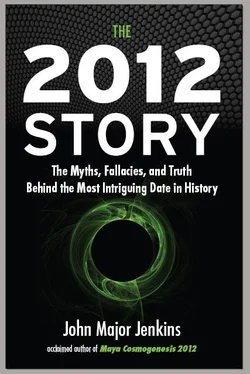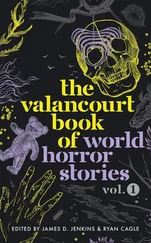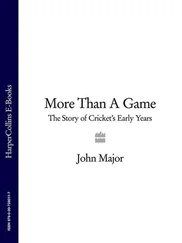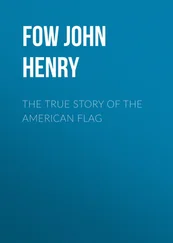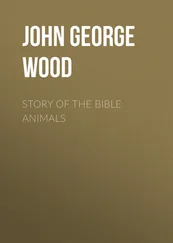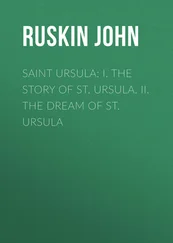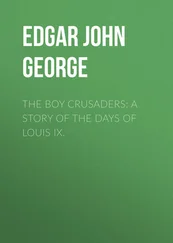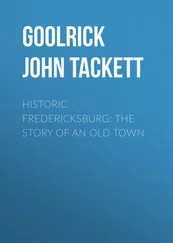Shearer must be recognized for three things: (1) the origin of the Harmonic Convergence date (August 16-17, 1987); (2) advocating that modern seekers could follow the 260-day sacred calendar as a spiritual system; (3) furthering the idea of a dire turning point looming in the near future, based on mysterious calendar systems perfected long ago in Mexico. But it’s important to realize that Shearer worked solely with ideas connected to the 52-year Calendar Round, and his 1987 cycle-ending date is not based on the Long Count.
As we will see, his friend José Argüelles took the baton from Shearer and morphed the entire movement in several ways. He blended the Harmonic Convergence with the Maya 2012 date, suggesting a 25- or 26-year countdown from 1987 to 2012 or 2013 (the exact idea is unclear in his various interviews and writings). He also sparked grassroots gatherings at sacred sites with his Planet Art Network and tied his call for these events to the Harmonic Convergence date. The “be-in” concept, wherein people up for anything gather together to celebrate their being-ness, has been an unquestioned meme in 2012 party planning; it appeals to children of the 1960s. I’ll address in Chapter 13 the effectiveness of these types of gatherings and whether it is worth trying to craft “Partay 2012” in their image.
Finally, Argüelles adopted and advanced Shearer’s notion that following the 260-day calendar could be a spiritual path for modern non-Maya seekers, the only solution to the world’s corrupt materialism. This approach became particularly central to his Dreamspell kit, a teaching tool or game that included a dial for calculating your “galactic signature” (your birthday) and a gameboard, intended to be played with other people who wanted to learn how to be in touch with “natural time.” The kit was printed in China, packaged in a box, and was initially intended to be bought by the case by self-selected Dreamspell evangelists and distributed to potential new members. It came with a book but was lacking in clear instructions.
In 1992, Argüelles announced that the artist formerly known as Argüelles was dead and that he was now the voice of the seventh-century Maya King of Palenque, Pakal. Argüelles’s revealed identity as a wizard-channeler who renamed himself Valum Votan, Pakal’s living channel, is not at all foreshadowed in his brilliant early book from 1975 called The Transformative Vision . In an endnote in that book we read of his awareness of Shearer’s work and a glimpse of how he would link it to 2012:
…attention should also be drawn to the fact that a larger 5,125-year cycle which began in 3113 B.C. [sic] will draw to an end in A.D. 2012. What this may mean in relation to the information given by Shearer has yet to be worked out. Obviously, time will tell! 3
Before we venture more deeply into the controversial work of Argüelles, we need to discuss two other important early books that invoked 2012. They too appeared in that pivotal year, 1975. One used 2012 as an anchor point for a novel theory of time but didn’t mention the Maya. The other was all about the Maya and their Long Count calendar but failed, on a technicality, to actually mention the year 2012.
EARLY 2012 BOOKS: MCKENNA AND WATERS
Terence McKenna was a brilliant speaker and a pop icon, having boldly taken center stage as an advocate for psychedelic drugs. Born in Colorado, McKenna came of age in Berkeley, California, in the 1960s and graduated in 1969 with a bachelor of science degree in ecology and conservation from the Tussman Experimental College, a short-lived outgrowth of UC Berkeley. Thereafter he traveled widely in India, Southeast Asia, and South America in pursuit of shamans and hallucinogenic plants. The term “psychedelic drugs” is misleading. Terence encouraged greater sophistication in how drugs are categorized and talked about. He played a formative role in a new field of study called ethnomycology—the study of the interplay between psychoactive mushrooms, culture, and human consciousness.
Terence’s far-reaching and comprehensive mind allowed him to operate on many levels. He was at once a visionary philosopher, a pioneer ethnomy cologist, a botanical preservationist, an extemporaneous speaker, a writer, a logos bard, a world explorer, and a shaman of inner realms. His work deserves a comprehensive treatment, which I can’t undertake here, but by focusing on his Time Wave Zero theory we’ll be able to understand his work with 2012 and how several ideas have become tenaciously attached to 2012. In The Invisible Landscape , a book Terence cowrote and published with his brother Dennis in 1975, we learn of the unusual experiment they undertook in Colombia in 1971. That experiment triggered the formulation of the Time Wave Zero theory. The McKenna brothers had traveled with several friends to Colombia in search of an exotic hallucinogenic plant called oo-hoo-ké . What they found instead were fields of psilocybin mushrooms.
After several weeks of tripping and gathering samples, Dennis formulated an experimental plan: On a certain night they would ingest the mushrooms and Dennis would induce a visionary breakthrough by forcefully humming in a high pitch. The vibratory catalyst of the humming would, theoretically, open him up to collective memories and universal truths believed to reside in DNA. That was the plan. Terence recounts the experiment at La Chorrera in his 1993 book True Hallucinations :
As I watched my mind and listened to my brother rave, I began to realize that the experiment had unleashed some sort of bizarre effect. I ask myself now why it was so easy for me to make the leap from assuming we were having a peculiar localized experience to the idea that we were key parts of a planet-wide phenomenon? … The psilocybin-induced cognitive hallucination made the impossible and unlikely seem probable and reasonable. I became flooded with ecstasy as the realization passed over me that we had passed the omega point, that we were now operating in the first few moments of the millennium. 4
The inner perceptions of explorers stumbling through uncharted domains of Mind may be hard for the uninitiated to digest. But the fact is that something did happen. And although Dennis eventually came down from his trip, Terence was launched into an ongoing dance with the I Ching (an ancient Chinese oracle), elaborating its secret contents through mathematical operations that were inspired by intuitions he was being given by the mushrooms. The I Ching seemed to him to contain ancient insights about the nature of time. Terence found corresponding insights in the work of philosopher Alfred North Whitehead, whose term “concrescence” perfectly fit what Terence was seeing—something in the very nature of time that caused unconnected events through history to speed up and converge on a precise moment in the not-too-distant future. That totalized convergence would immanentize, or reveal in the now, the eschaton, the “transcendental object at the end of time.” The term eschaton comes from Middle Eastern studies in reference to eschatology, the study of the final ends of all things.
Terence advanced the notion that time is not a constant but has different qualities tending toward either “habit” or “novelty.” This idea counters a fundamental premise of Western science—that the quality of time is constant. An experiment conducted on Tuesday should give the same results as the exact same experiment conducted on Friday, all other conditions being equal. The fluidity of time and the advance of new or novel occurrences is what interested Terence, and his perception that novelty was increasing over time implied something profound: time and history were speeding up and approaching a culmination point. Change might be, according to the ancient Chinese Taoists, the only constant in nature, but that change was accelerating.
Читать дальше
